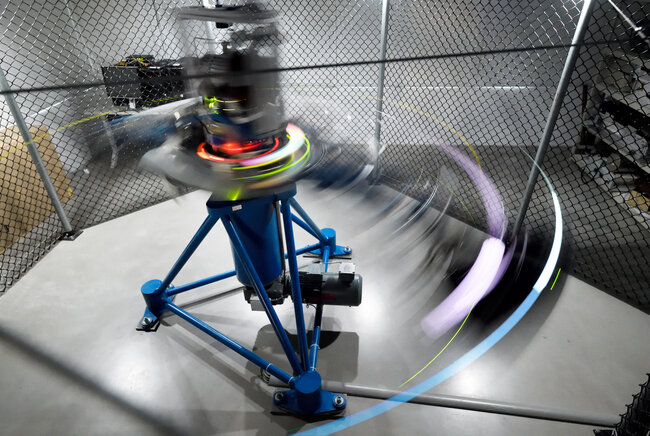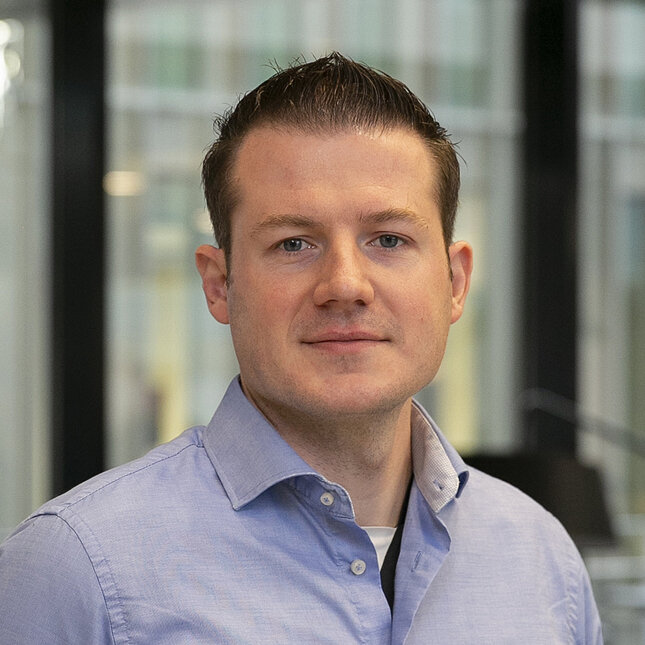Hyper-gravity controlled microparticles probing the plasma sheath
Patrick Meijaard defended his PhD thesis at the department of Applied Physics and Science Education on February 15th.

Many everyday objects (such as smartphones) have been made thanks to the application of plasmas. Relevant processes take place in the edge of the plasma, also known as the plasma sheath. Investigating these sheaths is difficult, but every piece of knowledge drives innovation. Who would have guessed a 100 years ago that smartphones would exist? The research of today, described in this thesis, contributes to technological developments of tomorrow.

The influence of the plasma between microparticles is very important in the field of dusty plasmas. The interaction between the particles is often assumed to be constant and a certain value. This research shows that this is not the case via the unique measuring method.
How is the plasma formed?
Most industrial plasmas are created by fast alternating strong electric fields between electrodes in a low-pressure gas. The electrodes touch the plasma, which will form thin sheaths containing high electric fields, wherein the magic happens.
Move particles with centrifuge
Most traditional plasma diagnostics are encumbered by numerous issues. Injection of microparticles, which can levitate inside the plasma sheath, are not. Here, the force balance can be studied, but only at that position.
Hence, a setup was created to spatially manipulate the microparticle’s position in the plasma sheath.
By attaching the dusty plasma setup on a 1-11g centrifuge arm, the magnitude of the earth’s acceleration could be artificially increased, which we call ‘hyper-gravity’, while controlling the resulting angle by tilting the plasma vessel. The centrifuge forced the microparticle deeper in the plasma sheath, and the tilt angle manipulated the microparticle horizontally while leaving the plasma and the interesting plasma sheaths undisturbed.
Unique measurement technique
The charge of the microparticle is very important when used as probe. To determine the surface charge, historically the linearly increasing frequency sweep was used. This method has the drawback that it can yield unreliable results. This is due to the long measurement time of this method. The microparticle could be etched during the measurement, therefore giving a wrong charge result.
For more reliable results, a new method was developed: the stepwise excitation method. With this method, the charge of microparticle can be determined in a fraction of a second.
Delayed charging effect
When comparing the introduced method with the traditional microparticle resonance method, the resulting damping constant differed. This proved that an additional effect is present changing the damping constant. This effect is attributed to the delayed charging effect, previously neglected in literature.
Maximum charge microparticle
The microparticle charge was determined, while applying hyper-gravity. This showed a maximum (negative) surface charge of the microparticle in the plasma sheath. This maximum was predicted in literature, but never experimentally verified.
Larger than Debye length
In this experiment, two microparticles were confined in the plasma sheath. As both microparticles were negatively charged, they are repelled by each other.
This repelling force was smaller than the expected electrostatic force between the microparticles, hence the plasma partly screens the charge of one microparticle to the other. This charge screening has been modelled in literature. In this model, the charge screening distance plays a vital role.
The experiment yielded the result that the screening distance was larger than the ion Debye length. Furthermore, by the application of hyper-gravity, the screening distance was measured in the plasma sheath at different positions. This showed an increasing screening distance closer to the electrode. In literature, it was assumed that the screening distance was the constant ion Debye length. This research shows that this is not the case.
Title of PhD thesis: Hyper-gravity controlled microparticles probing the plasma sheath. Supervisors: Job Beckers and Gerrit Kroesen.